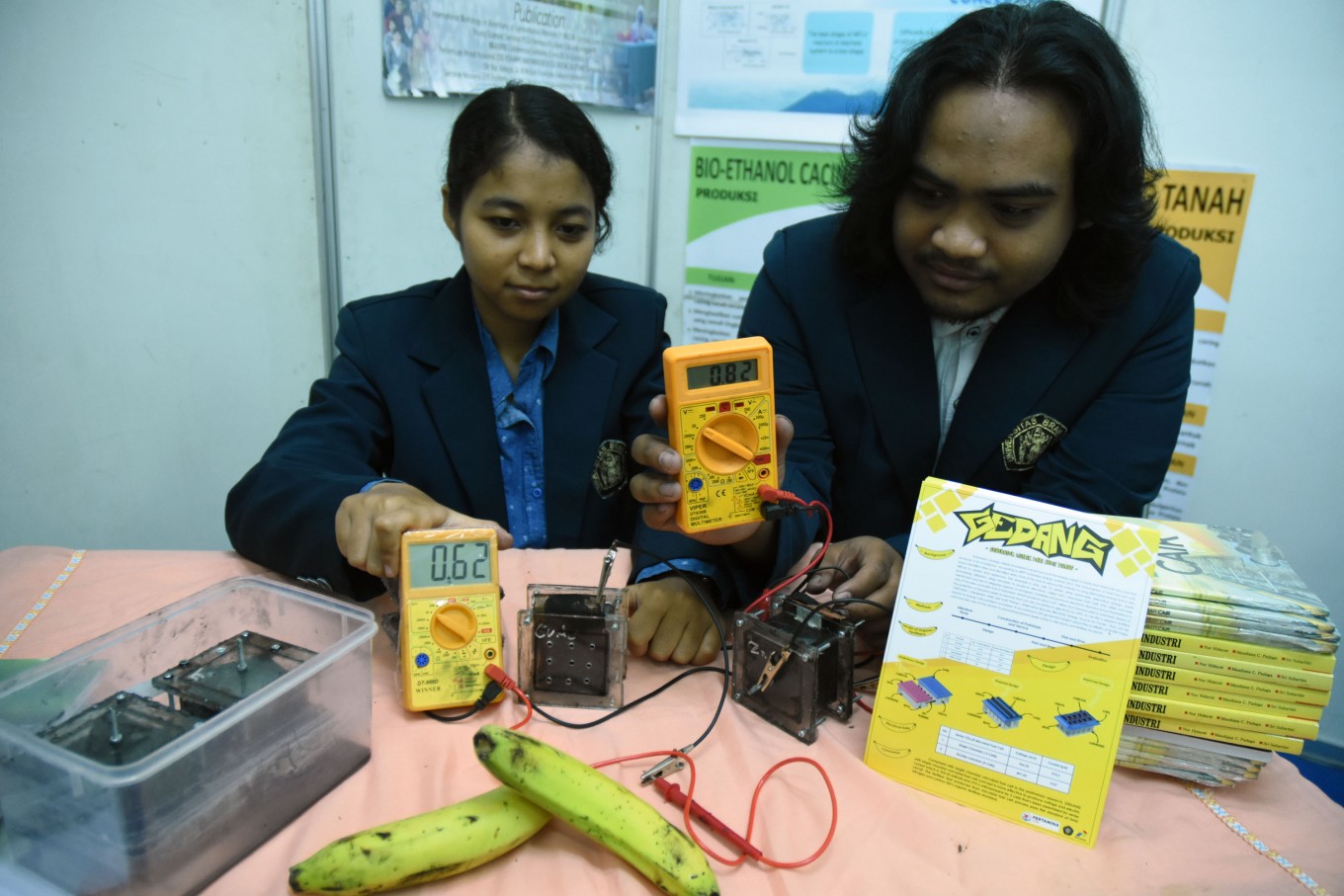Popular Reads
Top Results
Can't find what you're looking for?
View all search resultsPopular Reads
Top Results
Can't find what you're looking for?
View all search resultsMalang students produce electricity from banana skins
Change text size
Gift Premium Articles
to Anyone
 Aji Arif Setyawan (right) and Chrisma Virginia (left), environmental engineering students at Brawijaya University in Malang, East Java, demonstrate a device they claim can generate electricity from banana skins in Malang on Oct. 24. The device reportedly produces 5 volts of electricity from banana skins, enough power to recharge cellular phones. (The Jakarta Post/Aman Rochman)
Aji Arif Setyawan (right) and Chrisma Virginia (left), environmental engineering students at Brawijaya University in Malang, East Java, demonstrate a device they claim can generate electricity from banana skins in Malang on Oct. 24. The device reportedly produces 5 volts of electricity from banana skins, enough power to recharge cellular phones. (The Jakarta Post/Aman Rochman)
T
hree undergraduate students in Malang, East Java, claim to have invented a device that can produce enough electricity from banana skins to recharge a cellular phone.
The three, Sang Aji Arif Setyawan, Chrisma Virginia and Elviliana, are students of Malang-based Brawijaya University majoring in environmental engineering.
The device, called the Gedang (Javanese for banana), generates about 5 volts of electricity from the anaerobic bacteria in banana skins.
Read also: UGM students to bring contraception inventions to national science competition
Sang Aji said they decided to use banana skin because it was readily available. "Experiments showed that banana skin can generate more electricity than other fruits."
They claim the device can store electricity for up to a year. Banana skins that no longer generate power can be composted.
Chrisma said that during experiments, they used the skin of candi or kepok bananas, which are usually used as ingredients in traditional food and beverages.
Banana skins are crushed or grounded into pulp that is put into the anode reactor box or bio chamber. The cathode chamber, meanwhile, is filled with water.
The banana skin pulp is fermented by microbes to generate electrons that are channeled to the cathode, she said.
"We are developing the device so it can accelerate the reaction time and generate electricity in less than two weeks," Sang Aji said, adding that Gedang won second prize in the Pertamina National Science Olympic in 2016. (bbs)









